
Advanced Intelligent Systems
Scope & Guideline
Empowering Research in Intelligent Materials and Systems.
Introduction
Aims and Scopes
- Soft Robotics and Actuation Technologies:
Research in this area explores the design, control, and application of soft robotic systems, highlighting unique actuation methods such as pneumatic, hydraulic, and electroactive materials that mimic biological systems. - Artificial Intelligence and Machine Learning Applications:
The journal publishes studies that utilize AI and machine learning to enhance system performance, including algorithms for data analysis, decision-making, and control in intelligent systems. - Bioinspired Design and Biomimicry:
Many papers focus on bioinspired approaches, drawing lessons from nature to develop innovative robotic systems and materials that improve functionality and adaptability in complex environments. - Human-Robot Interaction and Collaboration:
Research on improving the interaction between humans and robots, including intuitive control systems, haptic feedback, and collaborative work environments, is a key focus area. - Neuromorphic Computing and Intelligent Materials:
This area examines the development of computing systems that mimic neural processes, including memristors and other materials that can learn and adapt, enhancing the capabilities of intelligent systems. - Multimodal Sensing and Feedback Systems:
The integration of various sensing modalities to enhance the perception and interaction capabilities of robotic systems is emphasized, enabling them to operate effectively in dynamic environments.
Trending and Emerging
- Soft and Adaptive Materials:
Research on soft materials and their applications in robotics is gaining significant traction, focusing on materials that can change properties in response to environmental stimuli. - AI and Machine Learning Integration:
There is an increasing emphasis on integrating AI and machine learning into robotics and intelligent systems, enhancing their capabilities in perception, decision-making, and adaptability. - Collaborative Robotics:
Studies focusing on collaborative robots (cobots) that work alongside humans in various environments are emerging, reflecting the growing interest in human-robot teamwork and interaction. - Wearable and Mobile Robotics:
Research on wearable robotics and mobile systems is trending, focusing on their applications in healthcare, rehabilitation, and personal assistance, highlighting their potential for improving quality of life. - Sustainable and Eco-friendly Robotics:
There is a rising interest in sustainable technologies and eco-friendly materials in robotics, addressing environmental concerns and promoting green practices in the development of intelligent systems.
Declining or Waning
- Traditional Rigid Robotics:
There is a noticeable decrease in publications focused on traditional rigid robotic systems, as the field increasingly shifts towards more flexible and adaptive soft robotics. - Conventional Control Systems:
Research centered on classical control methods is waning as more adaptive and AI-driven approaches gain traction, leading to a decline in interest in traditional control techniques. - Basic Sensor Technologies:
Papers focusing solely on basic sensor technologies without integration into intelligent systems or advanced applications have become less frequent, as the field moves towards more complex, multimodal sensing solutions. - Static Robotics Applications:
Applications involving static or non-interactive robotics are declining, as there is a growing emphasis on dynamic, interactive systems that can adapt to changing environments and user needs.
Similar Journals

Robotic Intelligence and Automation
Innovating at the Intersection of Robotics and Technology.Robotic Intelligence and Automation is a pioneering academic journal dedicated to the exploration and advancement of knowledge within the realms of robotics, artificial intelligence, and automation technologies. Published by EMERALD GROUP PUBLISHING LTD in the United Kingdom, this journal serves as a critical platform for researchers, professionals, and students who strive to understand and innovate in these rapidly evolving fields. With an impressive visibility across multiple disciplines, it has achieved a respectable Q2 ranking in Computer Science Applications, Control and Systems Engineering, Electrical and Electronic Engineering, and Industrial and Manufacturing Engineering, while also being recognized in Q3 for Artificial Intelligence and Human-Computer Interaction. The journal boasts a comprehensive Open Access model, allowing broad dissemination of research findings, which is vital for fostering collaboration and learning within the scientific community. Researchers can look forward to contributing to a publication that not only addresses current challenges but also seeks to shape the future of intelligent automation and robotics.

International Journal of Automation and Computing
Transforming Ideas into Solutions in AutomationInternational Journal of Automation and Computing, published by SPRINGERNATURE, is a premier academic journal dedicated to advancing knowledge in the fields of applied mathematics, computer science applications, control and systems engineering, and modeling and simulation. With an impressive impact factor and consistently ranked in the Q1 Quartile for its respective categories in 2023, the journal is recognized for its high-quality research and contributions to the automation and computing sectors. This journal provides open access to its articles, promoting the dissemination of innovative ideas and methodologies across a global audience. Based in China but serving an international community, the journal is key for researchers, professionals, and students looking to stay at the forefront of automation and computing technologies. Its rigorous peer-review process ensures that published works meet the highest scientific standards, making it an essential resource for those seeking to deepen their understanding and engage in cutting-edge research.
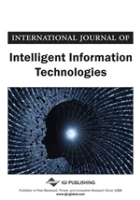
International Journal of Intelligent Information Technologies
Empowering Insights through Innovative Information Technologies.Founded in 2005, the International Journal of Intelligent Information Technologies serves as a pivotal platform for the dissemination of cutting-edge research in the fields of decision sciences and information systems. Published by IGI Global, this journal is dedicated to advancing the understanding of intelligent systems, data analytics, and technological innovations that drive modern decision-making processes. With an ISSN of 1548-3657 and an E-ISSN of 1548-3665, the journal is indexed strategically to ensure visibility among academia and industry professionals. Although it currently holds a ranking in the Q4 quartile of both decision sciences and information systems categories in 2023, it stands out for its comprehensive investigations into best practices and emerging trends in intelligent information technologies. It aims to provide readers with rigorous, peer-reviewed articles that offer practical insights and theoretical frameworks to facilitate informed decision-making in an increasingly data-driven world. Its commitment to quality research makes it an invaluable resource for researchers, professionals, and students alike who are eager to explore new dimensions of technology-assisted decision-making.
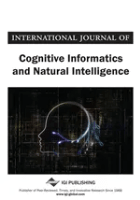
International Journal of Cognitive Informatics and Natural Intelligence
Unveiling New Frontiers in Cognitive InformaticsThe International Journal of Cognitive Informatics and Natural Intelligence, published by IGI Global, is an essential resource for researchers and professionals exploring the intersections of cognitive informatics, artificial intelligence, and human-computer interaction. Since its establishment in 2007, this journal has focused on advancing the understanding of cognitive systems and their applications in natural intelligence, contributing significantly to the fields of software engineering and interface design. Operating out of the United States, the journal aims to disseminate high-quality research and innovative methodologies to foster interdisciplinary collaboration. Despite its current standing in Q4 quartiles for the fields of Artificial Intelligence, Human-Computer Interaction, and Software, it serves as a vital platform for emerging scholars and seasoned professionals alike seeking to explore new frontiers in cognitive technologies. While it does not provide direct open access, these publications are instrumental in shaping academic discourse, and contribute to ongoing advancements in how we understand and integrate cognitive science into practical applications.

Science Robotics
Charting New Territories in Robotics ResearchScience Robotics, published by the American Association for the Advancement of Science, is a leading journal that explores cutting-edge advancements in the field of robotics, emphasizing the intersection of artificial intelligence, mechanical engineering, and control optimization. With its ISSN 2470-9476, this prestigious journal holds an impressive Q1 ranking across pivotal categories for 2023, including Artificial Intelligence, Computer Science Applications, Control and Optimization, and Mechanical Engineering. It has garnered renowned recognition in the academic community, highlighted by its high Scopus rankings—placing it in the top tier with a 99th percentile rank in Mathematics for Control and Optimization and Computer Science Applications, and maintaining a 98th percentile in Artificial Intelligence. While the journal is not currently open access, it serves as a vital repository of knowledge for researchers, professionals, and students seeking to stay at the forefront of robotic innovations. Operating from its base in Washington, DC, Science Robotics aims to disseminate world-class research that catalyzes future developments in robotics and automation technologies, making it an essential resource for those engaged in the scientific study and application of these transformative fields.
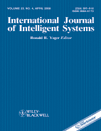
INTERNATIONAL JOURNAL OF INTELLIGENT SYSTEMS
Exploring the Frontiers of Intelligent InnovationInternational Journal of Intelligent Systems, published by Wiley-Hindawi, stands at the forefront of the Artificial Intelligence, Human-Computer Interaction, Software, and Theoretical Computer Science fields. With an impressive Q1 ranking across multiple categories in 2023 and a robust track record since its inception in 1986, this journal is essential for researchers, professionals, and students alike who are eager to explore cutting-edge innovations and theoretical advancements. Located in the United Kingdom, the journal operates under the esteemed Wiley-Hindawi publishing house, ensuring a broad dissemination of high-quality research articles. The journal's diverse scope encompasses advancements in intelligent systems and their practical applications, fostering an interdisciplinary dialogue that encourages collaboration across various domains. Although Open Access options are not available, subscribers benefit from the rich repository of knowledge this journal offers, making it a vital resource in the rapidly evolving landscape of intelligent technologies.
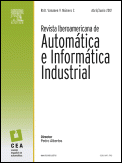
Revista Iberoamericana de Automatica e Informatica Industrial
Catalyzing Collaboration in Automation ResearchRevista Iberoamericana de Automatica e Informatica Industrial (ISSN: 1697-7912, E-ISSN: 1697-7920) is a distinguished open-access journal published by UNIV POLITECNICA VALENCIA, EDITORIAL UPV, since its inception in 2007. Based in Valencia, Spain, the journal aims to foster the dissemination of high-quality research in the fields of automation and industrial informatics. With a commendable impact reflected in its 2023 Scopus rankings—Q2 in Computer Science (miscellaneous) and Q3 in Control and Systems Engineering—it serves as a pivotal platform for innovative contributions from both established researchers and emerging scholars. The journal is committed to accessibility, ensuring that all articles are freely available to a global audience, promoting collaborative advancement in technology and engineering. Its coverage spans from 2007 to 2024, making it a valuable resource for those engaged in cutting-edge research and applications in the interdisciplinary landscape of computer science and engineering.
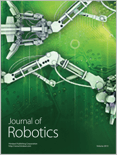
Journal of Robotics
Driving Collaboration in Cutting-Edge RoboticsJournal of Robotics, published by HINDAWI LTD, is a premier open-access journal dedicated to the rapidly evolving field of robotics. With its ISSN 1687-9600 and E-ISSN 1687-9619, the journal has been an essential resource for researchers, professionals, and students since its establishment in 2009. Based in England, the journal not only aims to disseminate cutting-edge research but also provides a platform for critical discussions on the latest advancements in robotics. Recognized for its quality, the journal holds a Q2 ranking in Computer Science (miscellaneous) and a Q3 ranking in Control and Systems Engineering for the year 2023. Spanning topics from autonomous systems to robotic engineering, the Journal of Robotics is indexed in various esteemed databases, making it a credible source for innovative research. The journal's commitment to open access ensures that its research reaches a broad audience, encouraging collaboration and driving forward the boundaries of technology and engineering.
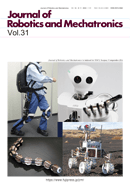
Journal of Robotics and Mechatronics
Transforming Insights into Practical SolutionsJournal of Robotics and Mechatronics, published by FUJI TECHNOLOGY PRESS LTD, stands at the forefront of innovation in the fields of robotics and mechatronics. Since its inception in 1989, this Open Access journal has become a vital resource for researchers, professionals, and students interested in advances that merge technology with mechanical systems, offering critical insights into practical applications and theoretical developments. With a commendable impact factor reflected in its Q2 rankings in both Computer Science (miscellaneous) and Electrical and Electronic Engineering, the journal serves as a platform for disseminating high-quality research and fostering academic collaborations. The journal enjoys wide accessibility since transitioning to Open Access in 2007, allowing for a global audience to engage with groundbreaking findings relevant to both industry and academia. Based in Tokyo, Japan, the Journal of Robotics and Mechatronics aspires to bridge the gap between research and practical implementation, encouraging the exploration of novel concepts and the sharing of scientific knowledge.
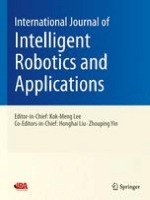
International Journal of Intelligent Robotics and Applications
Pioneering Research in Robotics and AI ApplicationsInternational Journal of Intelligent Robotics and Applications, published by SPRINGER SINGAPORE PTE LTD, is a pivotal platform dedicated to advancing the field of robotics and artificial intelligence. With an ISSN of 2366-5971 and an E-ISSN of 2366-598X, this journal has established its presence since its inception in 2017, showcasing innovative research and applications up until 2024. The journal aims to foster interdisciplinary collaboration by publishing high-quality articles that cover a broad range of topics from foundational AI concepts to cutting-edge robotics technologies. It holds respectable rankings, positioned in the Q3 category of Artificial Intelligence and Q2 category of Computer Science Applications in the 2023 metrics, and is indexed in Scopus with notable rankings in both computer science disciplines. Although it follows a subscription model, the journal remains committed to facilitating access to groundbreaking research for its audience of researchers, professionals, and students, contributing to the ever-evolving landscape of intelligent robotics.